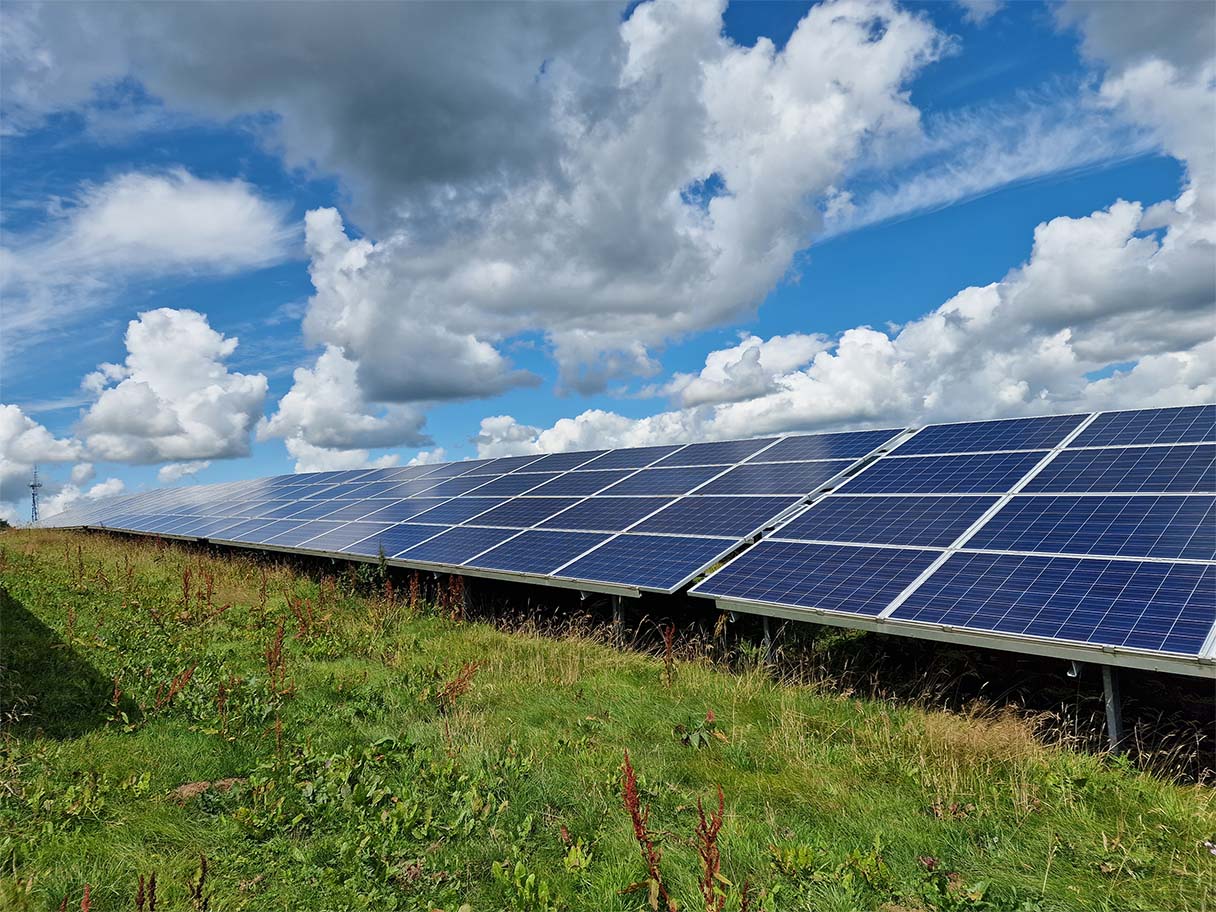
Why host a renewable energy project on your land?
Solar farms, battery energy storage systems and hydrogen production installations are all completely reversible infrastructure elements.
There are many other benefits to hosting renewable energy developments:
Secure a reliable income stream.
Renewable energy projects can provide a landowner with a long-term, predictable and dependable rental income for the next 30+ years, depending on the area used and the type of technology.
…at no risk and no cost to you!
Renewable energy projects are planned, developed, installed and maintained at absolutely no cost to the landowner. With even your legal fees are covered, the only investment you need to make is time. At the end of the asset’s life, it is your tenant’s responsibility to remove all the equipment and return the land to its former use.
Continue farming the land.
Renewable energy projects go hand in hand with the farming sector. Assets can be placed on obsolete or underutilised land while the areas surrounding the development can still be used for crops or grazing. Depending on the location of the project, the development may also introduce improved access routes and drainage systems.
With solar farms, there is an opportunity to benefit from dual income by also retaining the right to graze the land.
At the end of the project’s life, the land can be returned to its original use and the soil quality is likely to have benefited from a rest from intensive agriculture.
Improve land biodiversity.
There are great opportunities to boost biodiversity at any renewable energy development. Ecological enhancements can include log piles, bird and bat boxes and beehives. Solar farms can be sown with wildflower seeds, improving habitat for pollinators and birds as well as other wildlife. New trees and hedgerows can be planted to provide screening, further contributing to the biodiversity net gain.
Each new renewable energy development comes with a complete biodiversity management plan, which looks at the land, wildlife and all ecosystems. A biodiversity net gain is expected for each development project that we put together.
Create further local benefits.
Green energy infrastructure projects can help to create and sustain local jobs and services. They also provide great resources for school visits and encourage young people’s interest in energy and the environment. They also provide a clean, secure and local source of energy for all.
Play your part in the fight against climate change.
The transition to renewable energy is the vital step we must all take in the fight against climate change. You can take a decisive role in helping the environment and improving the UK’s energy security by choosing to host a renewable energy project on your land.
Solar farms and battery storage: what makes a suitable site?
There is a number of criteria that we consider when assessing land for a potential renewable energy development:
- Typically, the area should be between 50-200 acres.
- It should be relatively flat.
- It should ideally be surrounded by hedges and trees and a good distance from residential property.
- It should not be in a valued landscape or near historic buildings.
- It should be near overhead electricity cables and within 2KM of a grid connection point (e.g. a substation).
- It should have access from a main road suitable for HGVs.
If you’re ready to take the next step and discuss the suitability of your land, please don’t hesitate to get in touch with our friendly team.
Frequently asked questions
We have been developing energy infrastructure projects for more than 10 years. We understand that each site and each client may have different requirements and concerns about the process. We’ve collated the most frequently asked questions about the development process for solar, battery and hydrogen projects below.
Is my site suitable?
Our in-house experts in the areas of planning and grid will assess site suitability. Fill in this Expression of Interest survey and our team will get back to you with details of the next steps.
How long does the process take?
All projects are different and will range in size and complexity, but the process can typically take around 18 months to 24 months, from inception to completion.
When will I get paid?
Lease payments are typically paid quarterly or annually. During the initial phase of construction, you would be paid construction rent. All rent payments are index-linked for the lifetime of the project.
Additional project milestone payments might also be included, depending on the contract.
What happens after the leasing period?
The site owner will be legally responsible for the removal of all equipment when the lease comes to an end and the land will be returned to its original condition.
You will typically be protected against any decommissioning risk with an insurance bond.
Who manages the solar park?
Ethical Power can provide Asset Management services to keep the project performing to the highest possible standard. We ensure that the site is fully maintained and monitored and that any issues are dealt with quickly.
Can I sell my land?
Yes, you can. All payments along with the lease agreements will be transferred to the new owner.
What about security?
The security of the site is our responsibility.
CCTV cameras will be installed to monitor the site perimeter 24/7. The area will be enclosed with fencing positioned inside any hedgerows and trees around the boundary of the site. Standard stock proof fencing is typically used.